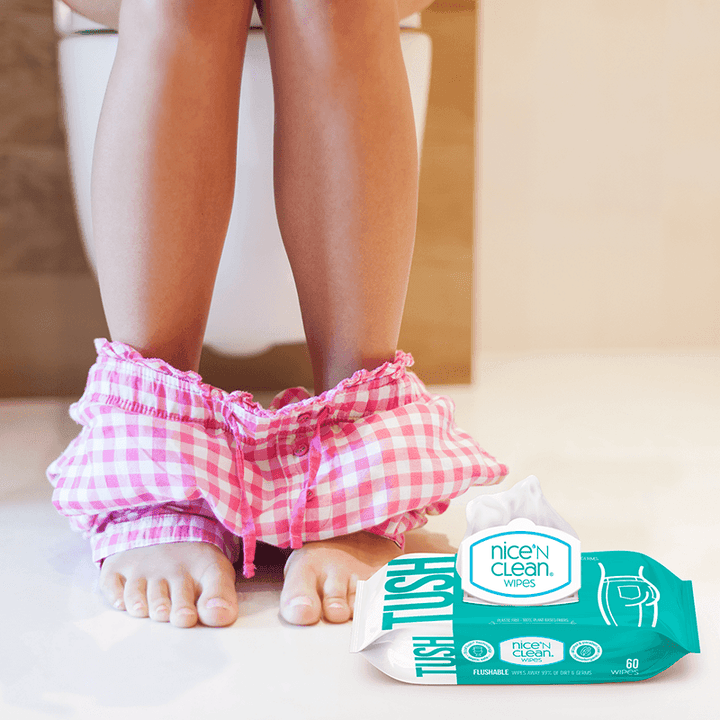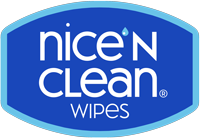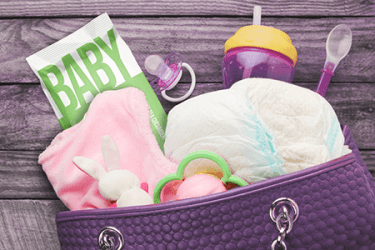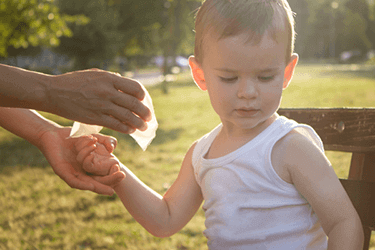
Ready for a quick rundown of toilet paper history?
For as long as there have been people, there have been ways to wipe.
Before the availability of mass produced toilet paper in the mid-1800s, humans had to resort to using what was free and available, even if it didn’t provide the most effective (or comfortable) results. Options included rocks, leaves, grass, moss, animal fur, corn cobs, coconut husks, sticks, sand, and sea shells. Water and snow were also used to wash and clean. The material used depended on various factors, such as socioeconomic status, weather conditions, social customs, and location.

Let’s take a look at how far we’ve come when it comes to cleaning our derriere -- from leaves to flushable moist wipes!
Leaves
Plentiful and easy to find, leaves were used by Neanderthals, who lived about 400,000 to 40,000 years ago [*]. There were some downsides of using leaves to wipe, though. For one, they weren’t very effective since they’re not absorbent. Two, they aren’t soft, so the wiping experience wasn’t exactly comfortable. And three, there was always the potential for accidentally using poison ivy (ouch!) [*].
Sponges
During the Greco-Roman period, the Ancient Romans came up with a communal sponge on a stick. In between uses, it sat in a bucket of salt water or vinegar [*][*]. It appears to be history’s first attempt at a “wet” wipe, and it was strictly for those who could afford such a luxury. For those who couldn’t afford the communal sponge, options included moss and leaves, as well as pieces of ceramic, called “pessoi.” Some of the pieces of pessoi had the names of enemies inscribed on them, so the sweet feeling of revenge somewhat made up for the discomfort during the wiping experience [*][*].
Sticks
In China, hygiene sticks made with bamboo and wood were discovered in latrines at a military base on the Silk Road in the northwestern region. These were believed to be in use 111 BCE–CE 109. They resembled spatulas with the ends covered in cloth that contained traces of fecal matter [*].
Water
In Ancient Egypt, bathrooms were a reflection of a family’s wealth. In poorer homes, the toilet was a wooden stool with a hole in it, while wealthier households had toilets made of limestone. Both types of toilets required a small container filled with sand to capture the waste below. The soiled sand would periodically be emptied into a river, dumped onto a field as fertilizer, or thrown onto a street. In wealthier families, servants were responsible for dumping the used sand and refilling the container with clean sand; in lower-class households, they emptied it themselves. Fast forward to today, the norm in Egypt is to use squat toilets with a shatafa (a bidet sprayer) to clean up afterwards. Toilet paper there is viewed as unsanitary and ineffective; plus, the plumbing system in Egypt is not equipped to handle flushed toilet paper [*].
 Rags and Cloth
Rags and Cloth
For King of England Henry VIII and his six wives, they used the softest lamb’s wool and cloth to clean their royal rumps. Everyone else used the Roman communal sponge described above. Over time, wiping with a rag became more the norm in both Europe and America, as cloth became more affordable to the emerging middle classes. Peasants in lower classes still had to use their shirt sleeves to clean up in the loo, though [*].
In 15th and 16th century France, royalty and other wealthy individuals used hemp, lace, and wool. In addition to using luxury fabric, the French King and his Queen, Marie Antoinette, hired servants to handle the clean-up process [*].
Rope
During the 17th century, sailors out discovering the New World found a new use for frayed ropes. After each wipe, the frayed ends of the long ropes would hang in the sea to be “washed” between uses [*].
Corn Cobs
When they dropped off the Pilgrims at Plymouth Rock, the colonists made a go of using dried corn cobs, which were easy to rotate in a single direction or at one spot [*]. They were said to be more comfortable than using straw. Native-Americans used snow in the wintertime, and leaves from various plants the rest of the year.
Paper
Paper originated in China in the second century BC and evidence of it being used for personal cleaning was discovered in the text of a Chinese scholar in the 6th century. Fast forward to the 14th century when China began mass producing toilet paper. In the 1390s during the Song Dynasty, Chinese emperors ordered perfumed 2x3-foot paper sheets to be produced for the imperial family [*][*].
In the 1700s, colonial Americans began using old newspapers and catalogs to wipe. In 1792, American Robert B. Thomas put a hole through the corner of the Old Farmer’s Almanac so it could be hung from a hook in the outhouse. The idea was that you could read a page while doing your business, then wipe with it [*][*].
In the Western world, commercially produced toilet paper finally began circulating in 1857 as “medicated paper.” These therapeutic wipes invented by New York entrepreneur Joseph C. Gayetty were sold in packs of 500 for 50 cents [*]. Innovation in the toilet paper industry included “splinter-free” in the 1930s, multi-ply in 1942, and scented in 1964 [*][*].
 Modern Day Wiping Solutions
Modern Day Wiping Solutions
It’s hard to believe that centuries later, so many people are still using toilet paper. While toilet paper has certainly come a long way in terms of comfort and durability, there’s something even better now -- flushable wet wipes!
Wet wipes were pioneered in 1957 by New Yorker Arthur Julius. He came up with the idea for a disposable wet napkin and created it in his Manhattan loft using a converted food packet packaging machine. A few years later, his Wet-Nap® wipe was being used by customers at the Kentucky Fried Chicken restaurant chain. Today, his wet wipes company, Nice-Pak, manufactures many wet wipe brands, including Nice 'N CLEAN® flushable, baby, antibacterial, and lens wipes.
Nice 'N CLEAN® Flushable Wipes are thick, soft, and moist to provide a comfortable and effective cleaning experience. The plant-based wipes contain aloe and vitamin E, are gentle on your skin, and leave you feeling fresh and clean without irritation. The flushable wipes are made with Eco-Flush® technology so they’re safe for well-maintained sewers and septic systems.
If you have not tried moist toilet tissue yet, then you’re missing out on a cleaner and more comfortable wiping experience. Treat yourself (and your bottom) by trying Nice 'N CLEAN® Flushable Wipes.
Flushable Wipes

$15.99
Buy On Amazon More Online Stores Walmart Find A Store Near You Septic-safe* and soft on your bottom, our thick and moist Nice ‘N CLEAN® Flushable Wipes are specially designed to ensure a clean, refreshing, and soothing restroom experience! Septic-Safe*… read more




